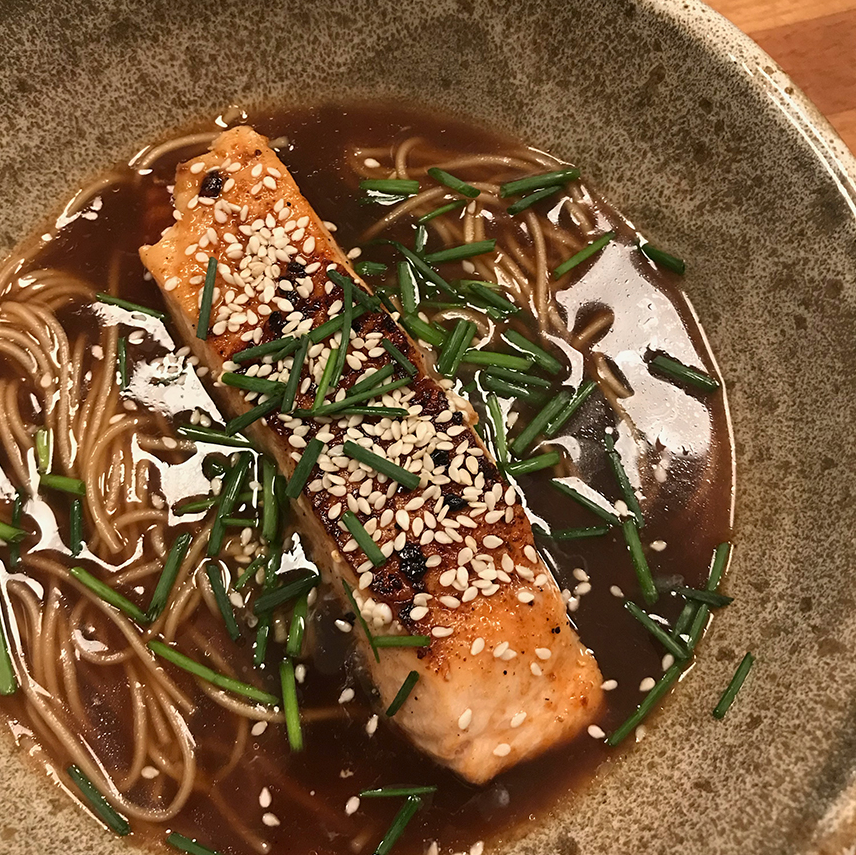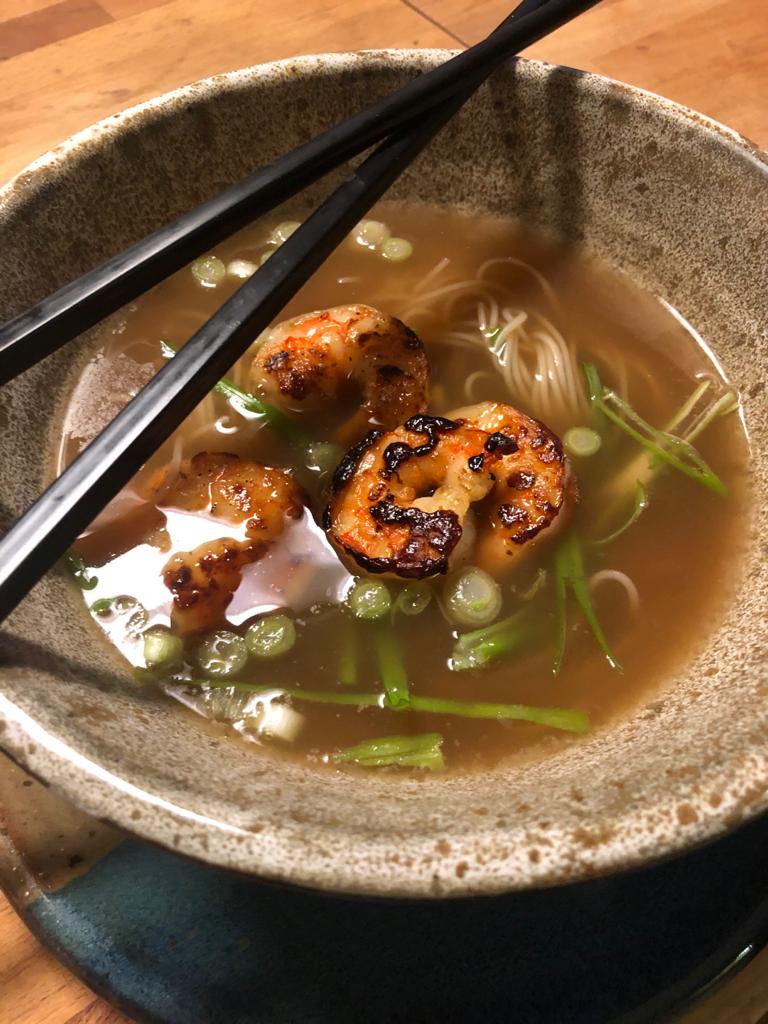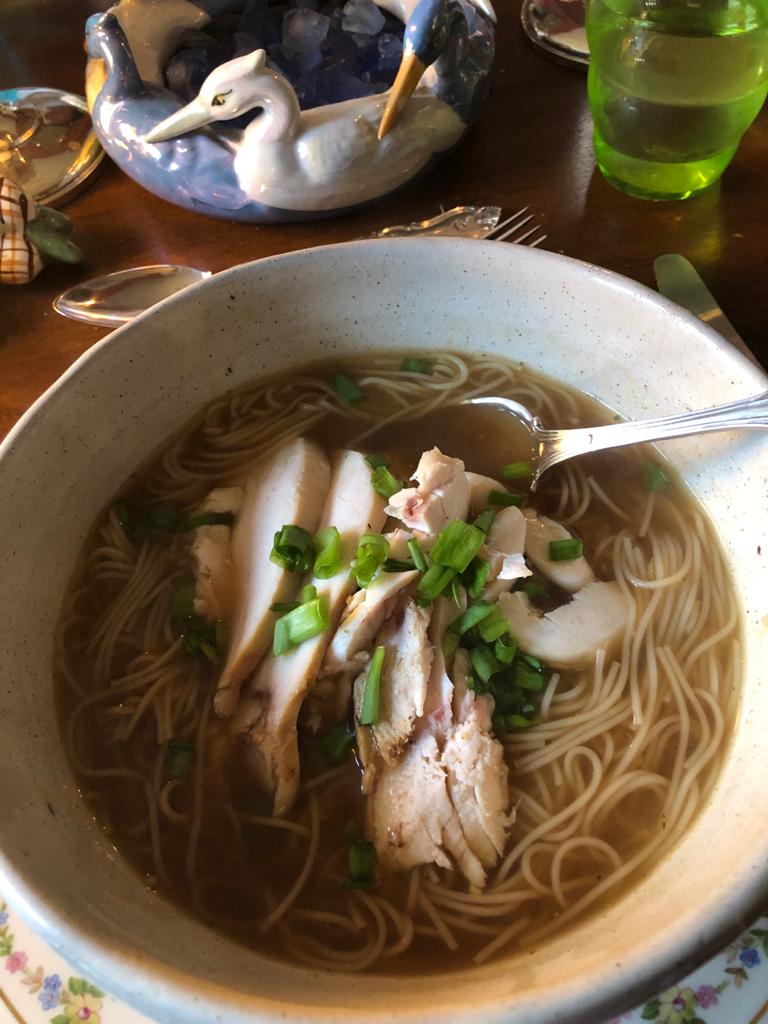 Comfort food brings back memories of matriarchs cooking for their kids. Dishes were simple. For me, when my parents rekindled as a couple with a dinner at their favorite restaurant I looked forward to spaghetti with butter sprinkled with freshly ground black pepper and Parmesan. When I felt sick and was in need of additional maternal love there was classic chicken soup. And, of course, perfect for anytime, an old-fashioned homemade American apple pie. I know, nostalgia and sentimental feelings of childhood are often associated with comfort foods: and why not, as we are all humans and in need of COMFORT.
Comfort food brings back memories of matriarchs cooking for their kids. Dishes were simple. For me, when my parents rekindled as a couple with a dinner at their favorite restaurant I looked forward to spaghetti with butter sprinkled with freshly ground black pepper and Parmesan. When I felt sick and was in need of additional maternal love there was classic chicken soup. And, of course, perfect for anytime, an old-fashioned homemade American apple pie. I know, nostalgia and sentimental feelings of childhood are often associated with comfort foods: and why not, as we are all humans and in need of COMFORT.
Krispy Kreme-comfort food?
There is pleasure in those simple moments, and as grown-ups, we often use the excuse of wanting comfort food when we want something that has nothing to do with healthy foods. They are instant gratification!
My instant gratification comfort food is a Krispy Kreme donut. Not that they are the best in the world or offer a distinctive pleasure, but because I love to see them being made in front of me. In most Krispy Kreme stores the production is visible through a glass window, often marred with fingerprints, and right on the other side the donuts are deep-fried, then automatically flipped over to march forward on a conveyer belt like soldiers in an orderly battalion. From there they are promptly glazed, then miraculously dried before a staff person dressed in a corporate green or red attire and wearing a paper hat reminiscent of the 1960’s delicately retrieves the donuts with a stick. That’s when I rush to a high table and let a warm donut (or several) melt in my mouth.
For the right mood, donuts are heavenly; a comfort food of indulgence often accompanied with immediate regret as I drive home feeling sticky with a sense of having experienced a welcome and temporary sugar jolt.

Despite this sugary example, the epitome of comfort foods are soups found across countries and cultures. Classics include chicken soup with Matzo Balls, French onion soup, Spanish Gazpacho, and New England Clam Chowder to name but a few. Unfortunately, I was raised with the idea that preparing a soup takes time. Combining meat or fish trimmings with numerous fresh and flavorful vegetables, herbs—often set within a bouquet garni with garlic cloves and peppercorns—then joined with other ingredients in a large pot of cold water before simmering for an extensive time, until, finally straining the by now abused looking vegetables and skimming the fat and froth. The result is flavor-infused liquid, the elixir of soup making.
Of course, this is only the beginning. According to James Peterson’s cook book titled Splendid Soups, broth is the backdrop for other flavors and ingredients that will complete the soup and make it both delectable and visually memorable.
Asian Soup

Some months ago, I stumbled on an Asian soup recipe in a William Sonoma book that broke most western rules of soup making mainly because the culture of soup making in Asia has evolved differently over several millennia. In particular, what was different in the preparation of this broth, was that the traditional western ingredients were absent and replaced with green onions, ginger and cloves, with soy sauce, mirin and sesame oil as liquid enhancers. Also, to my astonishment, the broth—which took on a deep brown color without browning any ingredients ahead of time—was first simmered and then boiled.
There are schools of thoughts about the pros and cons of simmering versus boiling a broth. Tradition emphasizes that “it’s essential to cook broth at a slow simmer,” because any fish or meat ingredient would be churned back into the broth giving it a cloudiness and often a greasy taste as one is unable to skim the soup.

How to proceed
The recipe I discovered through William Sonoma was called a Ginger-Green Onion Broth. As part of an Asian tradition, soba noodles are added, and the original version called for seared salmon. I mention original version because I am an architect, thus I could not fail to interpret the recipe to my liking by eventually substituting other ingredients for the salmon, including shrimp, caramelized sesame pork, or sliced left-over roasted chicken; all proteins easily prepared while the broth is been cooked. In addition, I made three adjustments and believe—after multiple trial and errors—that the identity of the soup was maintained, adjusted to matched my liking.
- First, the broth included thinly sliced white and pale parts of green onions with the necessary liquids. After simmering the soup for 10 minutes, ingredients are to be discarded and I missed the visual aspect of the cooked green onions.
- Second, while the preparation called for the removal of the green onions, ginger and cloves after simmering them in water, I strained them, thus giving more depth to the flavor.
- Finally, including cloves from beginning to end offered a flavor too pronounced for me. I opted to included them only when plating the broth with the soba noodles so not have the spiciness of the cloves overwhelm the subtlety of the other ingredients.
The end result is accomplished in less than twenty minutes and is nothing less than spectacular. Once I’d adjusted the base to my taste, I ventured to experiment with the proteins, of course substituting tofu for the salmon would add a vegetarian version!
Bon Appetit!
For the recipe, pleas visit Asian soup
Epilogue
Around the world, culinary experiences cannot be appreciated without the accompanying table settings and dinnerware, and the orchestration of a formalized dining experience based on cultural rituals. In Japan, for example, one refers to a concept of negative space called Ma, one that is essential when negotiating the space between bowl and the subject. This is traditionally done through iconic cultural eating utensils. Chopsticks as we well know serve to bridge small servings through the intervals of time and space.
At home, we use chopsticks while enjoying this soup, but as important is the choice of the bowl. I have come to give priority to a very special bowl (images 2-4) designed and crafted by one of my former students Yuki Tsujimoto. Thank you Yuki for enhancing our dining experience.
To view Yuki’s artwork, please visit his Instagram’s website: yuki_clayplay


